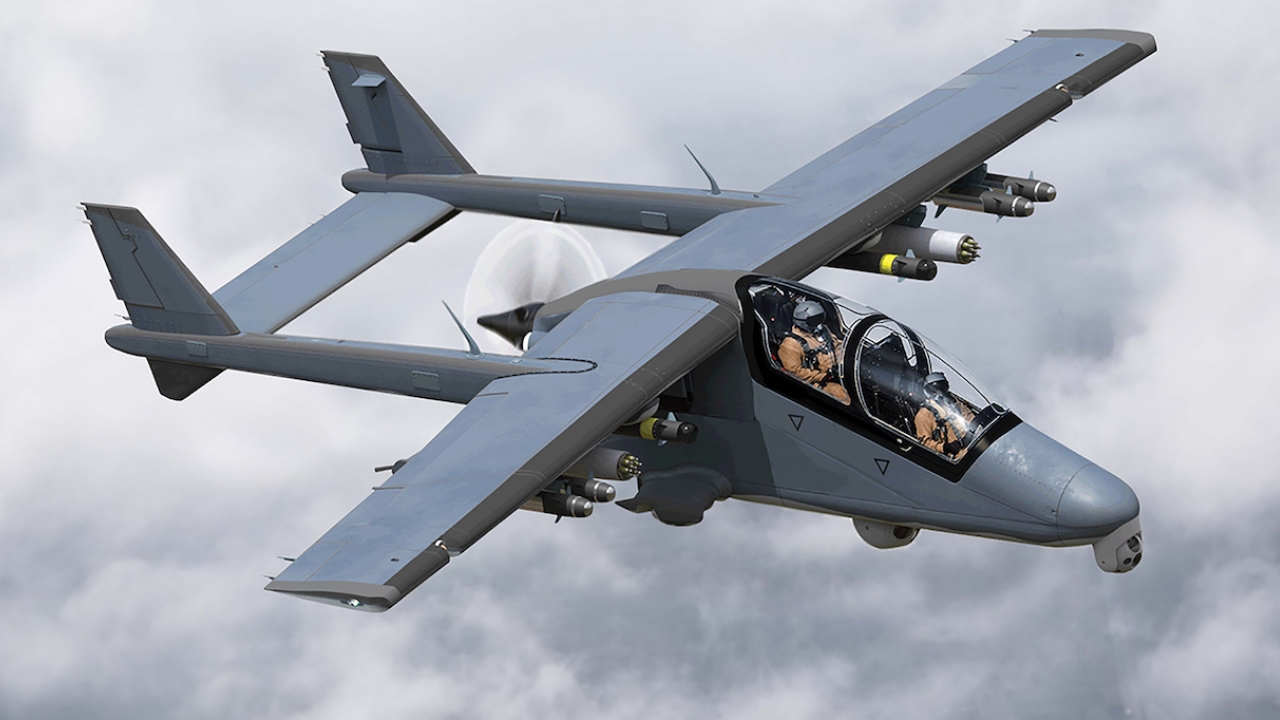SuperTucano propels into the African Market
A number of African countries have turned their attention to the Embraer EMB-314 A29 SuperTucano aircraft. Jon Lake looks at the reasons why.

For many years, some African air forces have been guilty of letting considerations of national prestige govern their combat aircraft procurement.
In many cases, supersonic fighter interceptors have been purchased or acquired which have had little tactical or operational relevance, but which have looked good in the flypasts accompanying the celebrations of various anniversaries of independence or liberation.
Often these aircraft have flown very little before being grounded by spares shortages or support difficulties. Where they have been kept active, they have usually proved unsuitable for the asymmetric and counter insurgency operations that have been required.
More recently, a number of African countries have been making more intelligent procurement decisions, seeking simpler, more cost-effective and more flexible multi-role and counter insurgency aircraft, which are cheaper to buy and to support, and which are easier to maintain and to operate in African conditions.
One such aircraft that has attracted growing interest in Africa is the Embraer EMB-314 A-29 Super Tucano.
Purpose-built for light attack, counter insurgency (COIN), close air support, and intelligence, surveillance and reconnaissance (ISR) missions in low-threat environments, as well as for advanced pilot training, the A- 29 is designed to operate in high temperatures and from rugged, semi-prepared forward airfields.
The Super Tucano is extremely manoeuvrable, but has a low heat, visual and noise signature, and is fitted with radar and missile warning receivers, chaff/flare dispensers, and Kevlar armour, enhancing survivability.
The aircraft incorporates modern avionics, sensors and weapons systems, and has a night-vision goggle (NVG)- compatible ‘glass cockpit’ with hands-on-throttle-and-stick (HOTAS) controls. The aircraft has five hardpoints for up to 1,550kg (3,300lb) of weapons and stores and is able to deliver a range of precision-guided munitions, including the joint direct attack munitions (JDAM) and small diameter bomb, as well as bombs, cluster bombs, and unguided rockets. It can be fitted with 20mm cannon pods, though it is already fitted with a pair of internal, wing-mounted .50 calibre machine guns with 200 rounds of ammunition per gun.
The Air Force of Burkina Faso received three A-29B aircraft in September 2011 and uses them primarily for border patrol missions.
Mauritania has augmented its three or four ex-French EMB 312 Tucano aircraft with three Super Tucanos. Negotiations for the acquisition of the EMB 314 began in December 2011 and the first two aircraft were delivered by December 2012. They were fitted with a FLIR Safire III infrared turret for border surveillance operations. The third Mauritania Air Force A-29B Super Tucano was shown at the Paris Air Show in 2013.
The National Air Force of Angola ordered six aircraft for border surveillance. Deliveries, originally scheduled to begin in early 2012, actually began on January 31 2013.
The Senegalese Air Force became the fourth African nation to order the Super Tucano, signing up for three aircraft at the 2013 LAAD defence and security international exhibition in Rio de Janeiro, Brazil.
In March 2015 the Brazilian Defense Ministry donated three refurbished EMB-312 Tucanos to the Mozambique Air Force, and Brazil is to finance a mid- to long-term loan to allow a Mozambican procurement of three A-29s on easy payment terms.
The Ghana Air Force ordered five aircraft in 2015 for use at a flying school that is to be built near Tamale, Ghana’s third city. An intention to procure six EMB 314 aircraft was announced by Ghana’s President, John Dramani Mahama, on November 20 2014, and he confirmed an order for five on February 18 2015.
The $88 million contract, which also includes logistics support and a training system for pilots and mechanics in Ghana, was signed at the Paris Airshow in June 2015. The first aircraft is expected to arrive in the second half of 2016, and it will be used for advanced training, border surveillance and internal security missions.
Another contract signed at the same Paris Airshow covered the supply of six A-29 aircraft for the Force Aérienne de la Republique du Mali (the Mali Air Force) for advanced training, border surveillance and internal security missions.
Further African nations that have been reported as showing an interest in the EMB 314 Super Tucano include Equatorial Guinea, Libya (for up to 24 aircraft) and Nigeria.
By contrast, armed versions of the rival Beechcraft T-6 Texan II have so far enjoyed less success. The Royal Moroccan Air Force has taken delivery of 24 T-6Cs, but uses these for training, while Mexico has also acquired six T-6Cs. The Hellenic Air Force had previously taken delivery of 20 armed versions of the T-6A. The AT-6B Wolverine is a new, further improved derivative of the T-6 aimed at much the same market as the A-29.
Stay up to date
Subscribe to the free Times Aerospace newsletter and receive the latest content every week. We'll never share your email address.

